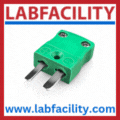
Posted to News on 7th Jul 2008, 20:58
A comparison of gas flow meter technologies
Andrew Mangell, MD of Bronkhorst UK, reviews current gas flowmeter technologies

Flow measurement is recognised as one of the 'need-to-know' process parameters, alongside temperature, pressure and level. Accurate measurement of gas flow is critical in the operation and control of many industrial and laboratory processes.
In the food and beverage sector, the chemical industry and semiconductor fabrication, flowmeter accuracy is often the determining factor between optimum quality and reject products, while in areas like laboratory research, pilot plants and custody transfer, precise and repeatable measurement is equally critical. Elsewhere, high levels of accuracy are not so crucial and flowmeters are used to give an indication of the rate at which a gas is flowing through a pipeline.
In this article, I will attempt to review the main categories of gas flowmeter available on today's market and consider their relative strengths.
 While Bronkhorst is the market leader in mass flow measurement and control, we do maintain an intelligent overview of the whole flowmeter sector, as well as its main customer groups, and I have endeavoured to offer a balanced appraisal of the current scene. Doubtless there will be debate from some quarters and new product developments may well have addressed some of the perceived technical shortcomings. Nevertheless, I hope to convince you that compatibility with existing meters, familiarity with a traditional technology and low purchase price are not necessarily the most valid specifying criteria for many applications. 'New technology' flowmeters are offering increased levels of accuracy, fewer maintenance issues, impressive digital output capabilities and competitive lifecycle costs, which surely make them worthy of serious consideration.
While Bronkhorst is the market leader in mass flow measurement and control, we do maintain an intelligent overview of the whole flowmeter sector, as well as its main customer groups, and I have endeavoured to offer a balanced appraisal of the current scene. Doubtless there will be debate from some quarters and new product developments may well have addressed some of the perceived technical shortcomings. Nevertheless, I hope to convince you that compatibility with existing meters, familiarity with a traditional technology and low purchase price are not necessarily the most valid specifying criteria for many applications. 'New technology' flowmeters are offering increased levels of accuracy, fewer maintenance issues, impressive digital output capabilities and competitive lifecycle costs, which surely make them worthy of serious consideration.
Installed base
With regard to the global installed base, differential pressure (DP) is the dominant means of measuring both gas and liquid flow, although there are clear signs that emerging or evolving technologies like coriolis, ultrasonic, vortex and thermal are growing strongly, as considerations like accuracy, reliability and lifecycle cost ascend the customer's agenda. Not surprisingly, DP flowmeters are currently maintaining their market lead, partly because users keep replacement instruments in stock and partly since retaining the same type of flowmeter is often regarded as the most risk-free solution. But reliability and performance problems reportedly arising with these instruments mean that coriolis flowmeters in particular are being increasingly specified for new plant and new processes, in addition to being integrated into existing schemes.
Indeed, flow control experts now tend to distinguish between "new technologies' and "traditional technologies', grouping coriolis, magnetic, ultrasonic and vortex flowmeters under the "new' category, with methods such as DP, turbine, positive displacement and variable area (VA) under the "old'. It is a useful classification that I will adopt in part, especially since it underlines the advanced computer processing capabilities of newer instruments; although I would unequivocally place thermal flowmeters in the "new' category, since they are very much at the forefront of digital technology and upcoming innovations from manufacturers like Bronkhorst put thermal mass monitoring firmly at the cutting edge of flowmeter design. For the purposes of this article, I have also had to ignore magnetic flowmeters, since they are restricted to monitoring conductive liquids, so cannot measure gases.
Measuring volume or mass
Flowmeters can also be distinguished by whether they measure flow rates in terms of volume, expressed in units like ml/min, or mass, in units such as kg/hr or lbs/min. Strictly speaking, PD flowmeters are the only ones that directly measure volumetric flow, although techniques like turbine, ultrasonic and vortex measure the velocity of the gas stream in order to determine volumetric flow. Inferential flowmeters, such as DP and VA sensors, measure neither volumetric nor mass flow, but infer its rate from other parameters, like a drop in pressure or the displacement of a float. Coriolis and thermal instruments are the only ones that measure the mass flow of the gases, albeit using rather different techniques.
All of this would be somewhat immaterial if mass and volume were much the same, but measured volumetric flow rates do vary dramatically with temperature and pressure changes. Moreover, while volumetric and mass measurements can be converted between one another if the fluid density is known, the density of gases is equally sensitive to pressure and temperature, unlike liquids that are less susceptible to changing conditions. Thus, while volumetric flow measurement undoubtedly still has its place in many industry processes, it is widely accepted that current "best practice' is to measure mass flow in gases and steam, thereby reducing process variables and leading to more consistent quality. Accurate, repeatable mass flow measurement improves chemical reactions, leads to more precise dosing and custody transfer, facilitates laboratory analysis and helps to eliminate wastage. This also explains why the Coriolis technique in particular, which continuously and directly monitors mass flow, is often described as the near-perfect measuring principle.
Having said that, various specifying criteria - like compatibility, repeatability, reliability, simplicity and, of course, purchase price - dictate that the different types of new and old technology flowmeter each have their own advocates and optimum applications. So let us look at the main flow measurement techniques, in purely alphabetical order, and examine their strengths and limitations:
Coriolis
These use the Coriolis effect, in which a vibrating tube is caused to distort, for measuring the flow rate directly, eliminating the need to compensate for temperature, pressure and density. They can also measure a mixture of gases, unknown gases, and fluids moving between gaseous and liquid states. Coriolis meters offer high measuring accuracy, are unaffected by flow profile, even down to very low flow rates as used in nanochemistry. Line size was considered a limitation, but the largest instruments can now be fitted to 12inch diameter pipes.
tstart{c,80%}
thead{Strengths|Limitations}
tdata{Universal measuring principle|Higher set-up costs}
tdata{Direct measurement of mass|More limited line size}
tdata{Very high accuracy|High flow rates}
tdata{Low flow rates|}
tdata{Low cost of ownership|}
tdata{No major moving parts|}
tend{}
Differential pressure
The most common type of flowmeter, the DP, measures the flow of gases inferentially, employing the Bernoulli equation that interprets the relationship between pressure and flow rate. These flowmeters introduce a constriction or obstruction in the pipeline, creating a pressure drop from which velocity and volumetric flow can be calculated. Various types of DP flowmeters are used, the most popular being the orifice plate, which can be subject to wear. They are typically less accurate than Coriolis flowmeters and are best used with clean, non-corrosive gases.
tstart{c,80%}
thead{Strengths|Limitations}
tdata{Large installed base|Subject to wear}
tdata{Comparatively inexpensive|Medium accuracy}
tdata{Wide range of flow rates|Complex mass calculations}
tdata{Simple, straightforward|Possible regular maintenance/inspection}
tdata{Extensive pipe diameters|Poor turn-down}
tend{}
Positive displacement
PD flowmeters measure volumes of fluid by repeatedly filling and discharging compartments of known volume, with gas from the flowstream. There are various types of PD meter, using vanes, gears, pistons, paddles or diaphragms to separate the fluid. They provide high accuracy, but cannot handle dirty fluids, and they incorporate moving parts that are subject to wear.
tstart{c,80%}
thead{Strengths|Limitations}
tdata{High accuracy|Clean gases only}
tdata{Unaffected by flow profile|Subject to wear}
tdata{High rangeability|Pressure drop issues}
tdata{|Higher maintenance costs}
tdata{|Low flow rates}
tend{}
Thermal
Thermal flowmeters measure the mass flow of gases, employing a combination of heated elements and temperature sensors, with thermodynamic principles used to derive actual mass flow. They do not require correction for changes in gas temperature, pressure or density and are extremely accurate, especially when measuring low and very low flow rates, and are no longer regarded as high cost. Thermal meters are often limited to clean gas, but Bronkhorst's non-bypass principle means there are no narrow pipelines to clog with particulate, so they can handle most gases.
tstart{c,80%}
thead{Strengths|Limitations}
tdata{Measure mass flow|Clean gases (bypass types only)}
tdata{Highly accurate and repeatable|High flow rates (above 11,000m3/hr)}
tdata{No moving parts|}
tdata{Minimal maintenance|}
tdata{Low to very low flow rates|}
tend{}
Turbine
Fluid passing through a turbine flowmeter spins an axial rotor, the rotational speed of which indicates flow velocity. They have a wide flow range and offer a reasonable level of accuracy at an affordable price, although they are restricted in use to clean, non-corrosive fluids and measure only volumetric flow. Similar comments apply to paddle wheel and pin wheel flowmeters, which translate the mechanical action of paddles/wheels into volumetric flow.
tstart{c,80%}
thead{Strengths|Limitations}
tdata{Familiar technology|Clean gases only}
tdata{Medium purchase price|Need consistent velocity}
tdata{Reasonable accuracy|Require straight pipe runs}
tdata{Easy to install and maintain|Bearings subject to wear}
tdata{Wide-flow rangeability|Need enough flow to spin}
tend{}
Ultrasonic
Ultrasonic flowmeters use sound waves to determine the velocity of a gas, employing either transit-time sound travel or Doppler frequency shift techniques. Volumetric flow is determined by multiplying velocity with the pipe area. Available in both inline and clamp-on formats, ultrasonic meters are non-obstructive and very accurate, although this may require multipath meters, where flow rate is determined by averaging the values.
tstart{c,80%}
thead{Strengths|Limitations}
tdata{Non-invasive (clamp-on)|Higher set-up costs}
tdata{No moving parts|Pipe-wall interference (clamp-on)}
tdata{Detect zero flow|Clean gases only (transit)}
tdata{High life expectancy|Need particles (Doppler)}
tdata{Wide range of larger pipe sizes|Known gas profiles only}
tend{}
Variable Area
Also known as rotameters, VA flowmeters typically comprise a tapered glass or plastic tube and an internal metering float, with the volumetric flow rate proportional to the displacement of the float. Among the oldest flow technologies, it is inexpensive and easy to install, although historically had to be fitted vertically, and is sensitive to changes in temperature, pressure and density. Interestingly, Bronkhorst recently introduced a digital alternative, the Mass-View, which offers greatly improved accuracy, electronic output signals and no fragile glass components in the flow path, thereby eliminating some of the limitations of VA flowmeters.
tstart{c,80%}
thead{Strengths|Limitations}
tdata{Ease of installation|No data output (glass/plastic types)}
tdata{Large installed base|Glass breakage issues}
tdata{Low maintenance|Sensitive to condition changes}
tdata{Simple technology|Moderate accuracy}
tdata{|Float sticking problems}
tend{}
Vortex
Vortex flowmeters measure the frequency of vortices created by an obstacle placed in the fluid stream, which are proportional to the flow velocity. Velocity multiplied by pipe area again gives volumetric flow. The measuring signal is not subject to drift, so Vortex meters do not need frequent recalibration, although they are best used with swirl-free, medium-to-high speed flow rates, which generate sufficient vortices.
tstart{c,80%}
thead{Strengths|Limitations}
tdata{Long-term stability|Not for low flow rates}
tdata{Low sensitivity to process variations|Straight pipe run needed}
tdata{Moderate set-up costs|Some pressure drop}
tdata{No moving parts|Pipe vibration/noise issues}
tdata{Minimal maintenance|Limited turn-down}
tdata{Good accuracy|}
tend{}
If in doubt as to the best technology to use for a particular application, the best advice is to consult an expert.






